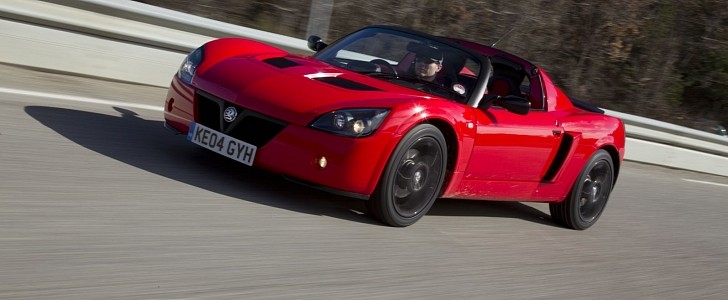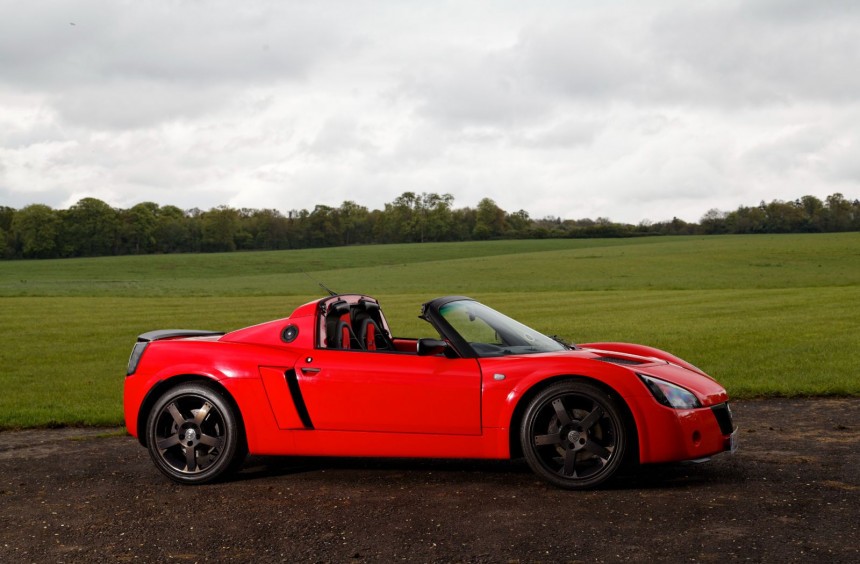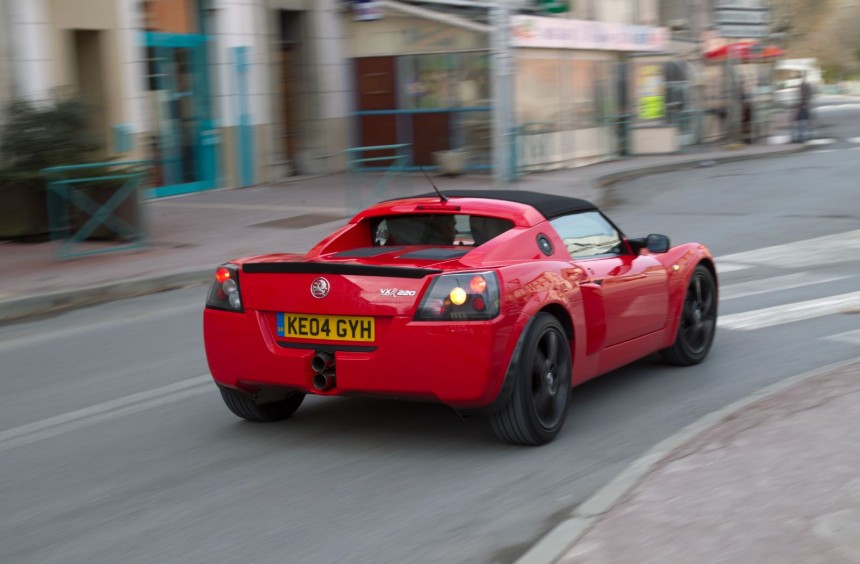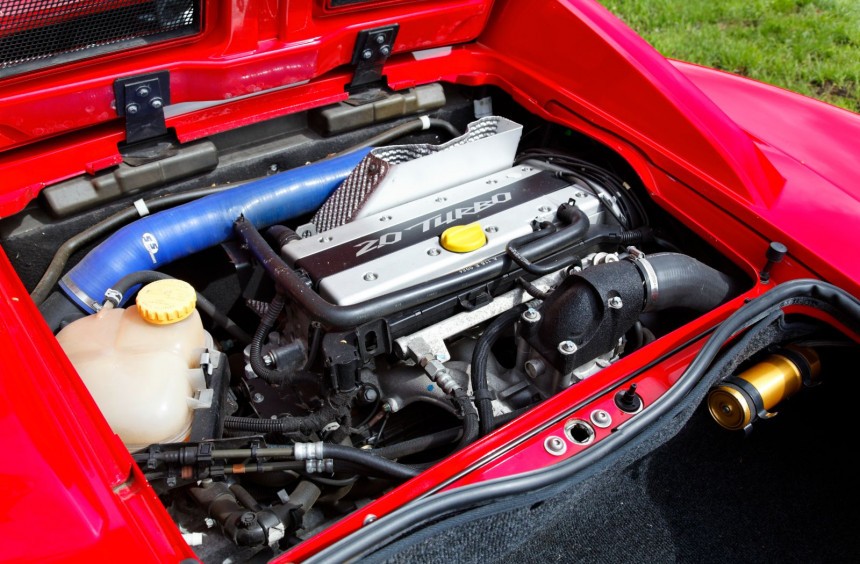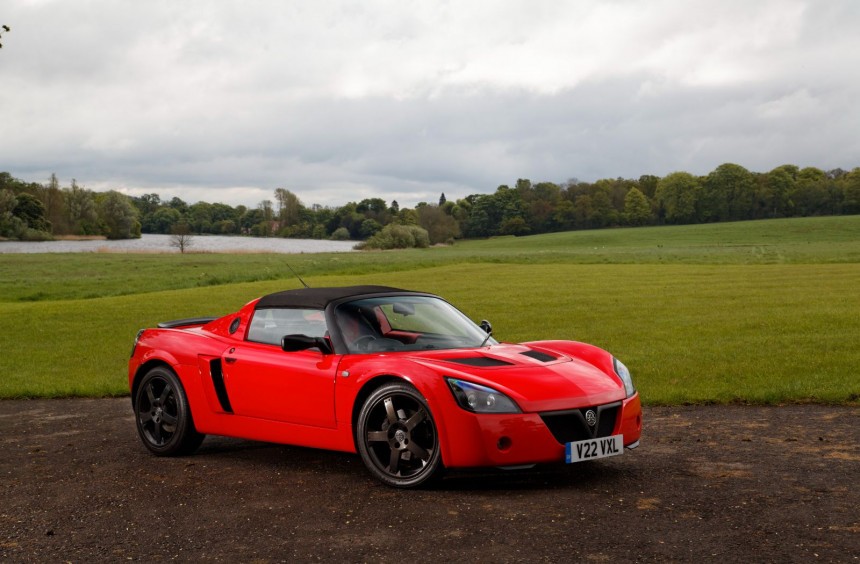Sixteen years before the C8 Corvette, GM teamed up with Lotus and created a track-focused, mid-engine Vauxhall that was an absolute joy to drive.
If you live outside of Europe, you probably never heard about Vauxhall, so before we get into the juicy details about the wonderful VXR220, let’s start with a quick history lesson.
Founded in 1857, Vauxhall is one of the oldest established vehicle manufacturers and distribution companies in the United Kingdom. In 1925, it was acquired by GM, becoming the American carmaker’s arm on the Old Continent. Since the early 1980s, it sold rebadged Opel (another GM Europe brand) models in the UK.
In 2017, both Opel and Vauxhall were brought by French corporation Groupe PSA which joined forces with Fiat Chrysler Automobiles four years later and formed Stellantis N.V.
Now that we’re acquainted with the British carmaker, let’s get back to the GM era, specifically the late 1990s.
With changes in European crash safety regulations looming, UK sportscar manufacturer Lotus needed to develop a replacement for the original Elise. To do that, the company was in desperate need of extra funds, so they approached GM with a pretty outlandish idea. Back then, the European brands under GM ownership offered a lineup of entry- to mid-level models, yet Lotus suggested a partnership that would give birth to an Opel (Vauxhall) two-seat roadster based on the new Elise’s underpinnings. While this didn’t make any sense to a lot of people, GM eventually agreed and, at the 1999 Geneva Motor Show, the Opel Speedster (Vauxhall VX220 in the UK) made its public debut.
Developed and built by Lotus in England, it employed a cutting-edge aluminum frame that weighed only 159 pounds (72 kg) and a lightweight body made entirely out of fiberglass. The car weighed 1,929 pounds (875 kg), making it roughly 220 pounds (100 kg) lighter than one of its main rivals, the Toyota MR2.
The Speedster (VX220) was initially released with a five-speed manual and a mid-mounted 2.2-liter Ecotec Z22SE that produced 145 hp. Since it was basically a lightweight Lotus, the little roadster handled phenomenally well. Moreover, it had more oomph than the standard, 145-hp Elise, but the automotive press, as well as many enthusiasts, believed that the car needed a bit more power to become truly great.
GM answered in 2003 by launching a new 2.0-liter turbocharged four capable of 200 hp. This was just what the lightweight sports car needed, with everyone praising its capabilities. In the UK, Car magazine gave it the Performance Car of the Year award, pointing out that “any road becomes VX road. And once it owns the road, it owns your heart.”
While mainland Europe buyers had to settle with the Opel Speedster Turbo, British enthusiasts were given something even better: the 2004 limited-edition, track-focused Vauxhall VXR220.
Produced in 65 units and available only in Calypso Red with black accents, this version didn’t offer any aerodynamic improvements or features that dramatically reduced weight. It looked much like the VX220 Turbo, but it felt way better thanks to an upgraded ECU, a free-flow air filter, and a hybrid turbo that increased the engine’s output by 20 hp. In addition, it came with a lower and stiffer suspension setup courtesy of German experts Bilstein, larger brake rotors, and unique Speedline alloy wheels wrapped in performance tires.
Inside, the stereo system was removed, and the stock seats were replaced with exclusive three-point harness-compatible buckets upholstered in black leather and red Alcantara to match the exterior.
Able to deliver 220 hp, it was no C8 Corvette, but this mid-engine GM sportscar was more than able to sprint to 60 mph (97 kph) from a standstill in 4.2 seconds, which is only a second slower than the standard, 490-hp C8 that came out sixteen years later.
Those who were lucky enough to drive one of these limited-edition models applauded the analog feel and handling. On the track, it hugged the tarmac, precisely maneuvering through tight corners. Its turbocharged 2.0-liter had a bit of lag, but it wasn’t by any means boring in the lower rev range. When the boost finally arrived, it was joined by a wide grin on the driver’s face as the tach needle quickly jumped towards its 7,000-rpm limit.
Even more impressive, the track-oriented, two-seater was just as thrilling to drive on the streets. The stiffer suspension did an adequate job at absorbing road imperfections, so using it as a daily didn’t result in a sore back.
Among its shortcomings, we can point out that it was rather difficult to access, particularly if occupants were over 6’ 2” (1.88 m) tall, due to its low stance and cramped cabin. However, once inside and shredding the road, all that was easily forgotten.
Today, a naturally-aspirated VX220 (Speedster), or even the boosted version, is relatively cheap and easy to find, but the limited-edition VXR220 is a different story. Because it’s rare and still incredibly fun, one of the 65 units built in 2004 rarely pops on used car websites or at auctions. When it does, the asking price varies between £20,000 and £40,000 ($26,146 - $52,293). Compared to a used Turbo, that’s more than double, but it’s still a great price for such a terrific car that hasn’t yet reached its true potential as a collector’s item.
A GM unicorn of the 2000s, the Vauxhall VXR220 came closer to sportscar perfection than any road-legal Corvette before it, according to many enthusiasts. Thanks to Lotus’ expertise, it was one of the greatest driver’s cars of its era, and it’s a shame that the carmaker didn’t make it a global model.
Founded in 1857, Vauxhall is one of the oldest established vehicle manufacturers and distribution companies in the United Kingdom. In 1925, it was acquired by GM, becoming the American carmaker’s arm on the Old Continent. Since the early 1980s, it sold rebadged Opel (another GM Europe brand) models in the UK.
In 2017, both Opel and Vauxhall were brought by French corporation Groupe PSA which joined forces with Fiat Chrysler Automobiles four years later and formed Stellantis N.V.
Now that we’re acquainted with the British carmaker, let’s get back to the GM era, specifically the late 1990s.
Developed and built by Lotus in England, it employed a cutting-edge aluminum frame that weighed only 159 pounds (72 kg) and a lightweight body made entirely out of fiberglass. The car weighed 1,929 pounds (875 kg), making it roughly 220 pounds (100 kg) lighter than one of its main rivals, the Toyota MR2.
The Speedster (VX220) was initially released with a five-speed manual and a mid-mounted 2.2-liter Ecotec Z22SE that produced 145 hp. Since it was basically a lightweight Lotus, the little roadster handled phenomenally well. Moreover, it had more oomph than the standard, 145-hp Elise, but the automotive press, as well as many enthusiasts, believed that the car needed a bit more power to become truly great.
While mainland Europe buyers had to settle with the Opel Speedster Turbo, British enthusiasts were given something even better: the 2004 limited-edition, track-focused Vauxhall VXR220.
Produced in 65 units and available only in Calypso Red with black accents, this version didn’t offer any aerodynamic improvements or features that dramatically reduced weight. It looked much like the VX220 Turbo, but it felt way better thanks to an upgraded ECU, a free-flow air filter, and a hybrid turbo that increased the engine’s output by 20 hp. In addition, it came with a lower and stiffer suspension setup courtesy of German experts Bilstein, larger brake rotors, and unique Speedline alloy wheels wrapped in performance tires.
Able to deliver 220 hp, it was no C8 Corvette, but this mid-engine GM sportscar was more than able to sprint to 60 mph (97 kph) from a standstill in 4.2 seconds, which is only a second slower than the standard, 490-hp C8 that came out sixteen years later.
Those who were lucky enough to drive one of these limited-edition models applauded the analog feel and handling. On the track, it hugged the tarmac, precisely maneuvering through tight corners. Its turbocharged 2.0-liter had a bit of lag, but it wasn’t by any means boring in the lower rev range. When the boost finally arrived, it was joined by a wide grin on the driver’s face as the tach needle quickly jumped towards its 7,000-rpm limit.
Among its shortcomings, we can point out that it was rather difficult to access, particularly if occupants were over 6’ 2” (1.88 m) tall, due to its low stance and cramped cabin. However, once inside and shredding the road, all that was easily forgotten.
Today, a naturally-aspirated VX220 (Speedster), or even the boosted version, is relatively cheap and easy to find, but the limited-edition VXR220 is a different story. Because it’s rare and still incredibly fun, one of the 65 units built in 2004 rarely pops on used car websites or at auctions. When it does, the asking price varies between £20,000 and £40,000 ($26,146 - $52,293). Compared to a used Turbo, that’s more than double, but it’s still a great price for such a terrific car that hasn’t yet reached its true potential as a collector’s item.
A GM unicorn of the 2000s, the Vauxhall VXR220 came closer to sportscar perfection than any road-legal Corvette before it, according to many enthusiasts. Thanks to Lotus’ expertise, it was one of the greatest driver’s cars of its era, and it’s a shame that the carmaker didn’t make it a global model.
